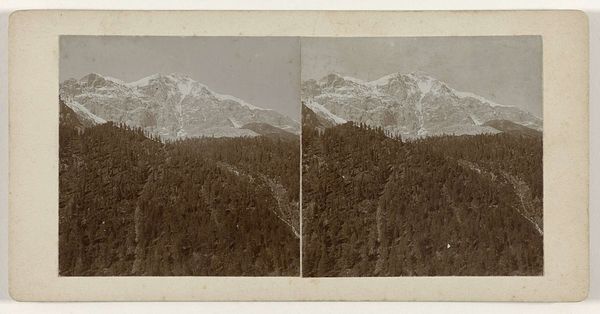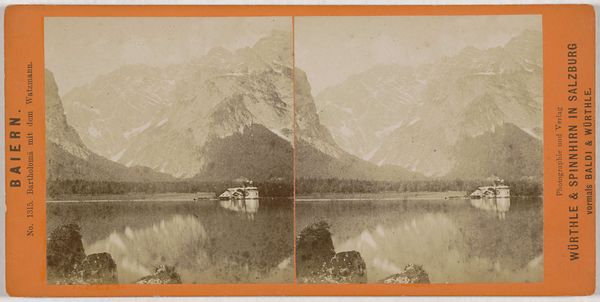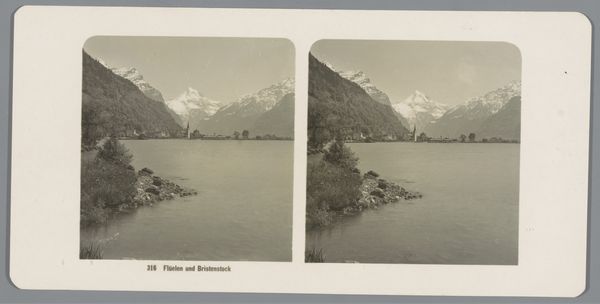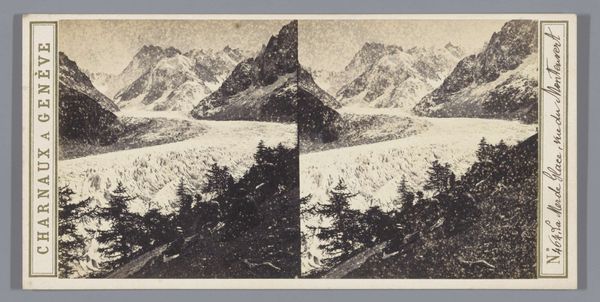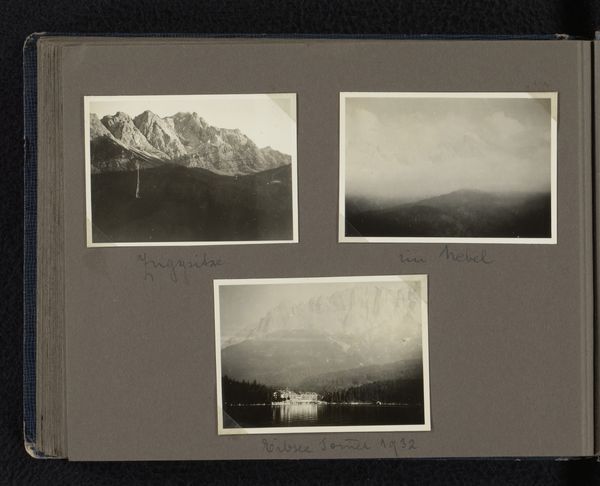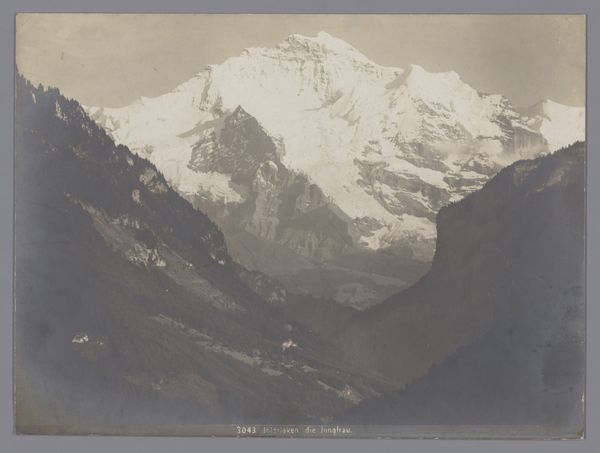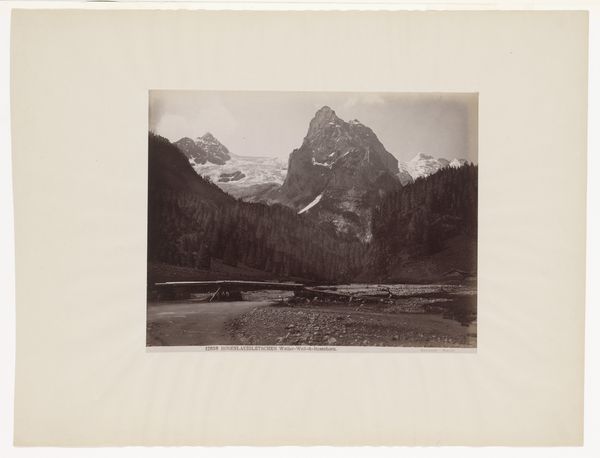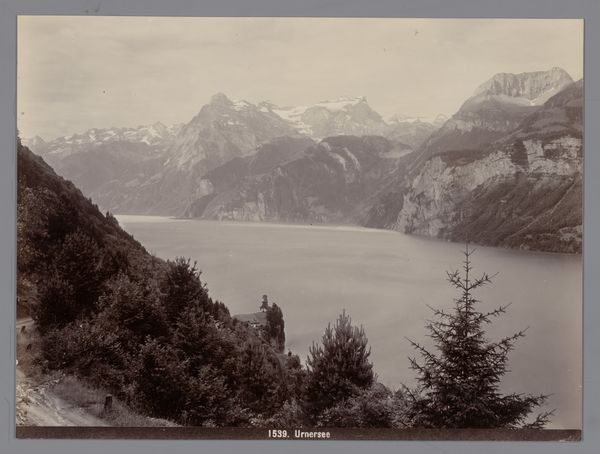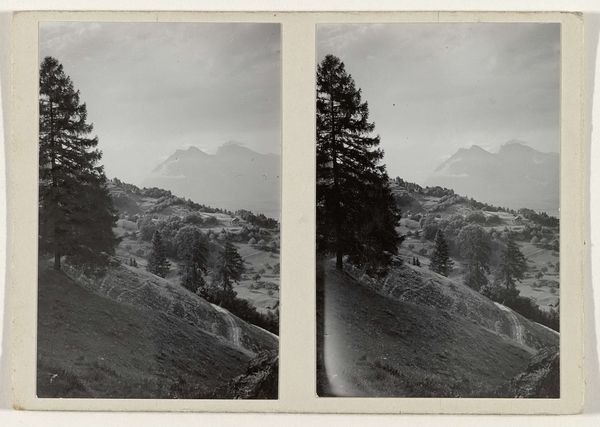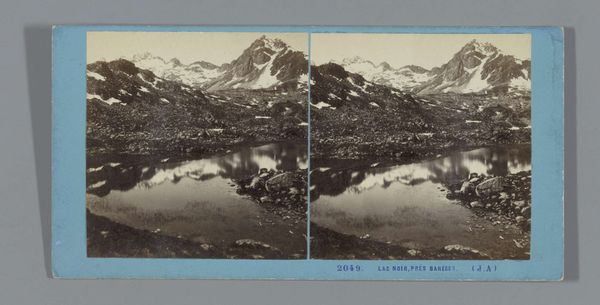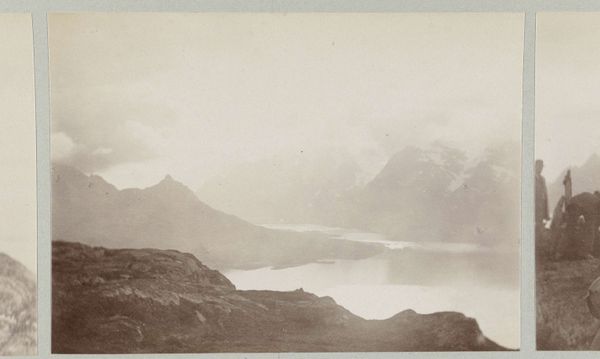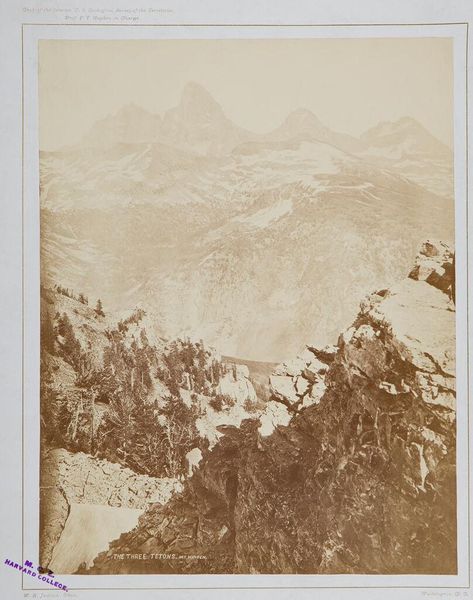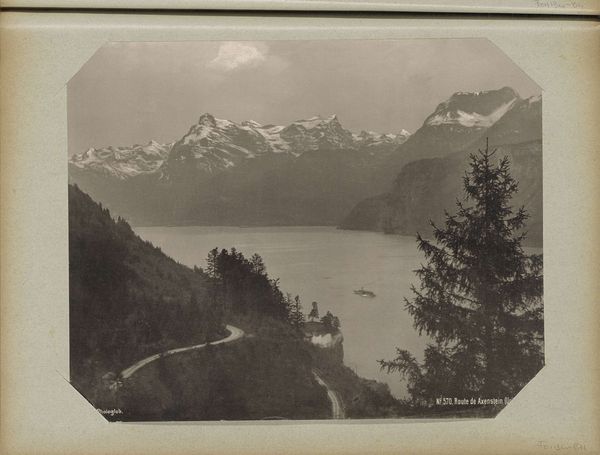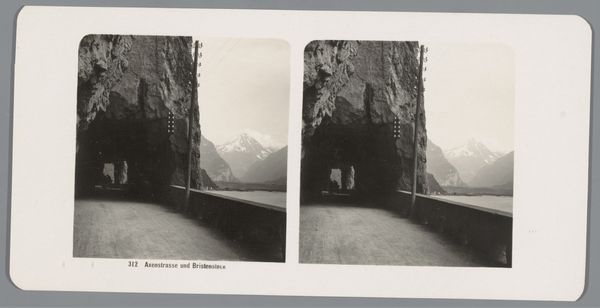
Gezicht op de Urnersee, met op de achtergrond de Urirotstock c. 1900 - 1910
0:00
0:00
gebruderwehrli
Rijksmuseum
photography, gelatin-silver-print
#
lake
#
landscape
#
photography
#
gelatin-silver-print
Dimensions: height 88 mm, width 179 mm
Copyright: Rijks Museum: Open Domain
Curator: Here we have “Gezicht op de Urnersee, met op de achtergrond de Urirotstock,” a gelatin-silver print made by the Gebrüder Wehrli, circa 1900-1910. It depicts a view of Lake Urner with the Urirotstock mountain in the background. Editor: The initial impression is of a melancholic scene; the grayscale and somewhat muted tones evoke a sense of stillness and quiet grandeur. The dark, imposing cliffs in the foreground contrast starkly with the distant, snow-capped mountains. Curator: What strikes me is the sheer material presence of this gelatin-silver print. Considering its period, it reveals much about photographic practices of image documentation and circulation and raises important questions about the economics of photography in relation to tourism. Editor: Yes, I’m interested in its cultural relevance too. I’m curious about its place within landscape photography of the late 19th/early 20th century—how it may have served a function of national or regional identity, perhaps as propaganda intended to promote specific narratives. Curator: I completely agree, this image offered, no doubt, controlled perspectives, deliberately presented by photographic studios like Gebrüder Wehrli to shape public perception, and feed economic activity through picture consumption. How were photographs perceived as commodity or tools? How did these pictures shape and reflect broader historical events? Editor: Furthermore, I wonder about its display context, not simply the gallery, but in homes as travel memorabilia. These framed images shaped our understandings, offering a kind of window onto distant lands and fostering both admiration and perhaps a form of mediated ownership over places unseen. Curator: Exactly. Understanding photographic landscapes helps us delve into how industrial-era tourism influenced art making, promoting consumption of picturesque destinations like Switzerland’s lakes and peaks, turning them into accessible yet mediated experiences. Editor: Ultimately, by tracing how social institutions shape photographic representation and consumption, we unearth its cultural and symbolic roles. Curator: Seeing how it intertwines artistic and social practice has reshaped my initial view. Editor: Agreed. This conversation deepens the artwork beyond surface appreciation. It truly provides additional, rich depth.
Comments
No comments
Be the first to comment and join the conversation on the ultimate creative platform.
